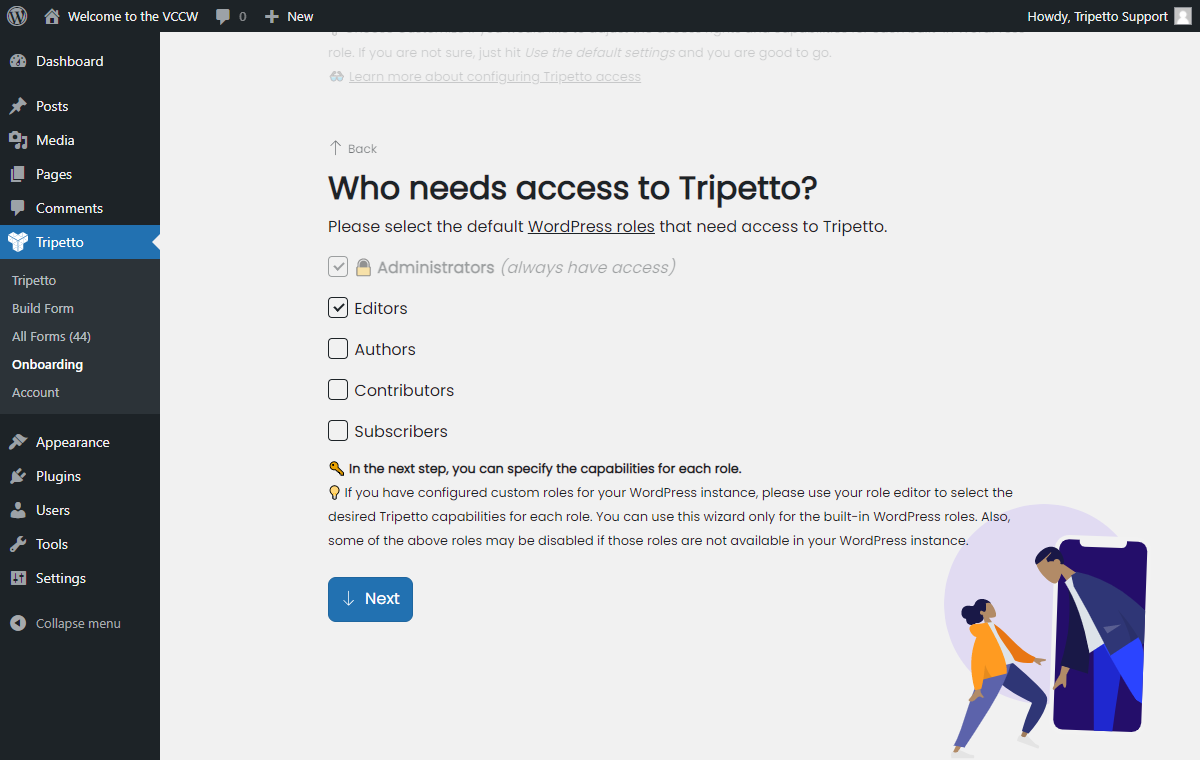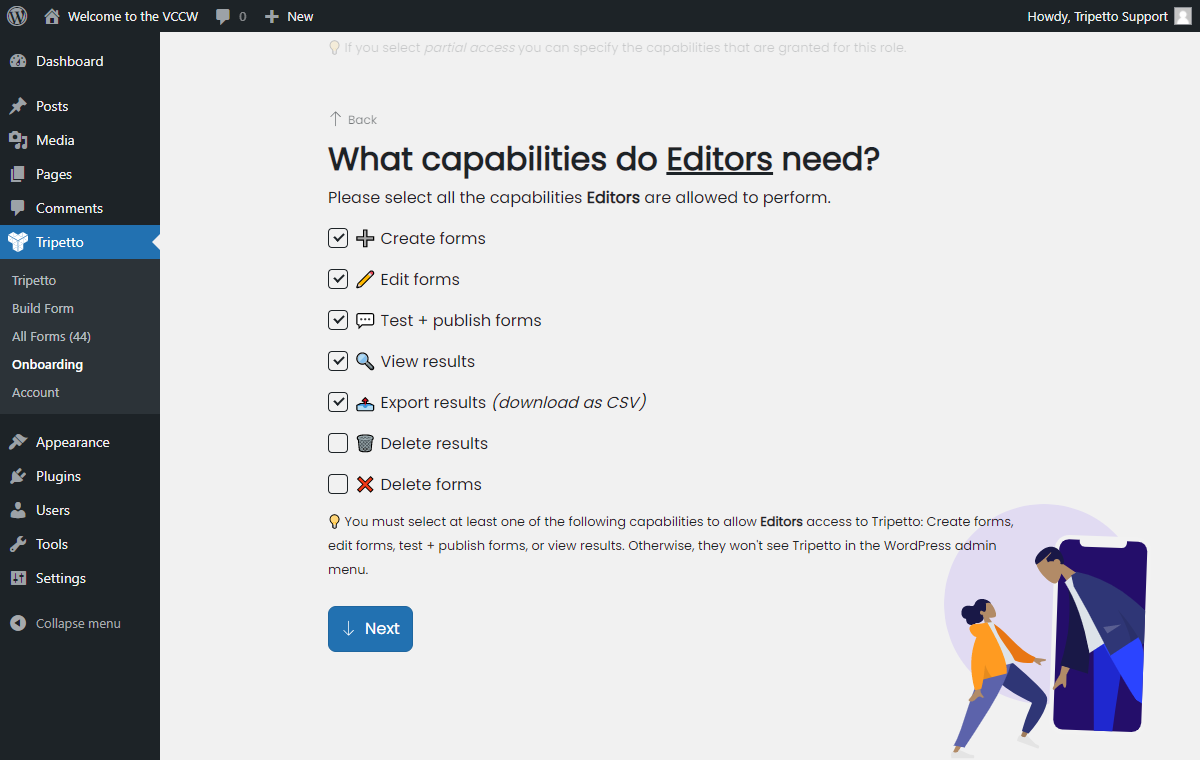How to configure plugin access and capabilities with WordPress user roles
The Tripetto WordPress plugin fully supports WordPress user roles. This enables you to configure which roles have access to the plugin and which capabilities each role has inside the plugin.
About WordPress roles
One of the great things about WordPress is that it has a built-in user roles concept, designed to give the site owner the ability to control what users can and cannot do within the site. Each user that has access to your WP Admin has one of those WordPress roles and with that the appropriate capabilities.
More information about WordPress roles and capabilities can be found in this support article at wordpress.org.
Default access to Tripetto
The Tripetto WordPress plugin has fully implemented the usage of those WordPress roles. WordPress offers six pre-defined roles that Tripetto also uses to grant the right default access and capabilities:
- ✅ Super Admin
Full access to all functions of the Tripetto plugin, including the general Tripetto settings and the Freemius account page for license management. - ✅ Administrator
Full access to all functions of the Tripetto plugin, including the general Tripetto settings and, in case of single-site installation, the Freemius account page for license management. - ✅ Editor
Full access to all functions of the Tripetto plugin. - ❌ Author
No access to the Tripetto plugin. - ❌ Contributor
No access to the Tripetto plugin. - ❌ Subscriber
No access to the Tripetto plugin.
Custom access to Tripetto
If you want to overrule the default WordPress roles settings, you can take full control over the roles that have access and even over the exact capabilities you wish to grant to each role. Tripetto helps you to do that easily.
Access to role settings
Access to the role settings is handled by the overall WordPress capability manage_options. By default only users with Super Admin or Administrator role have that capability enabled.
Open role settings
Users with an appropriate role can open the role settings in two ways:
- In the Tripetto plugin - When you activate the Tripetto plugin for the first time or just installed an update to it, we will give you the option to follow an onboarding wizard. Part of that onboarding wizard is configuring the desired roles and capabilities (if you have the right WordPress capabilities to do so).
This onboarding wizard is also available from the Tripetto dashboard to configure your settings at a later moment. - Via a third-party user roles plugin - Use a third-party user roles plugin to manage all roles and capabilities for your total WordPress environment (for example User Role Editor).
In this article we will use the Tripetto onboarding wizard to configure the roles.
Custom role access
In the onboarding wizard you can determine which roles have access to your Tripetto plugin. You simply select the desired roles that need to have access and that's it.
By default each role that you select will then get full access to all functions of the Tripetto plugin.

Custom role capabilities
To go one step further you can also customize the exact capabilities that each role has for Tripetto. In the onboarding wizard you will get the possibility to select the desired capabilities per role that you have selected.
The following capabilities are available for the Tripetto plugin:
tripetto_create_forms: Allows users to create new forms;tripetto_edit_forms: Allows users to edit existing forms;tripetto_run_forms: Allows users to get the shareable link of a form and run it;tripetto_delete_forms: Allows users to delete forms (first delete all form results);tripetto_view_results: Allows users to view the results of forms;tripetto_export_results: Allows users to export the results to a CSV-file;tripetto_delete_results: Allows users to delete results.

Minimal capabilities
To give a role access to Tripetto, it should at least have one or more of the following capabilities:
tripetto_edit_forms;tripetto_run_forms;tripetto_view_results.
Custom roles
On top of the six pre-defined roles, you can also add your own custom roles to your WordPress environment. In that case you will have to use a third-party user roles plugin to manage those roles and capabilities (for example User Role Editor).
In such a plugin you will see the above mentioned capabilities of Tripetto and you can simply activate the desired capabilities per role in your user roles plugin.
